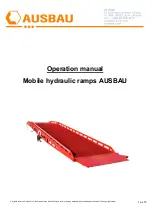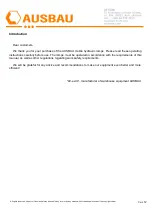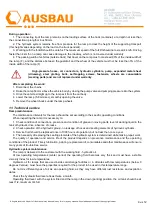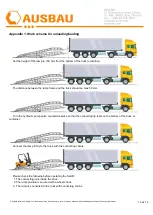
All rights reserved. No part of this manual may be used in any form or by any means without written permission of the copyright owner.
8
из
12
10. Operating rules
Before you start operating the ramp:
1. Visually verify that the ramp is in the correct position for operation.
2. Check the oil level.
3. Raise the ramp above the floor of the vehicle (50 mm higher) by closing the valve on the pump and inflate
pressure using the pump. When the desired height is reached, stop pumping pressure and the ramp will stop at the
reached height.
4. Center the car body regards to the ramp, carefully back the car up, making sure that the ramp and the car body
are parallel. Make sure that the ramp goes inside the loading surface of the vehicle body to a depth not less than the
length of the connection lip minus 50 mm.
5. Install wheel chocks under the ramp wheels (supplied with the ramp) and under the vehicle wheels.
6. Open the valve on the pump and wait until the ramp rests completely on the car body. Make sure that the ramp
is lying flat.
7. Secure the ramp chains to the vehicle body with carabiners (hooks).
8. Make sure that the pump valve is open when operating the ramp.
During loading and unloading, the ramp automatically monitors the level of the vehicle.
It is forbidden to drive the truck onto the ramp, connecting lip of which is not supported by
the vehicle body.
The hydraulic system is designed for ramp lifting only.
Do not use the ramp to lift the load.
The wheel group is designed only to move the ramp without load.
Do not drive up the ramp with the pump valve closed.
The direction of travel of the forklift:
1.
The forklift must move strictly on the reinforced parts of the ramp (tighter arrangement of the lower support
beams under the roadway).
2.
The forklift should not drive into the extreme left and right 100 mm of the ramp driveway.
3.
Forklift driving diagram (arrows indicate forklift wheel lanes).






























